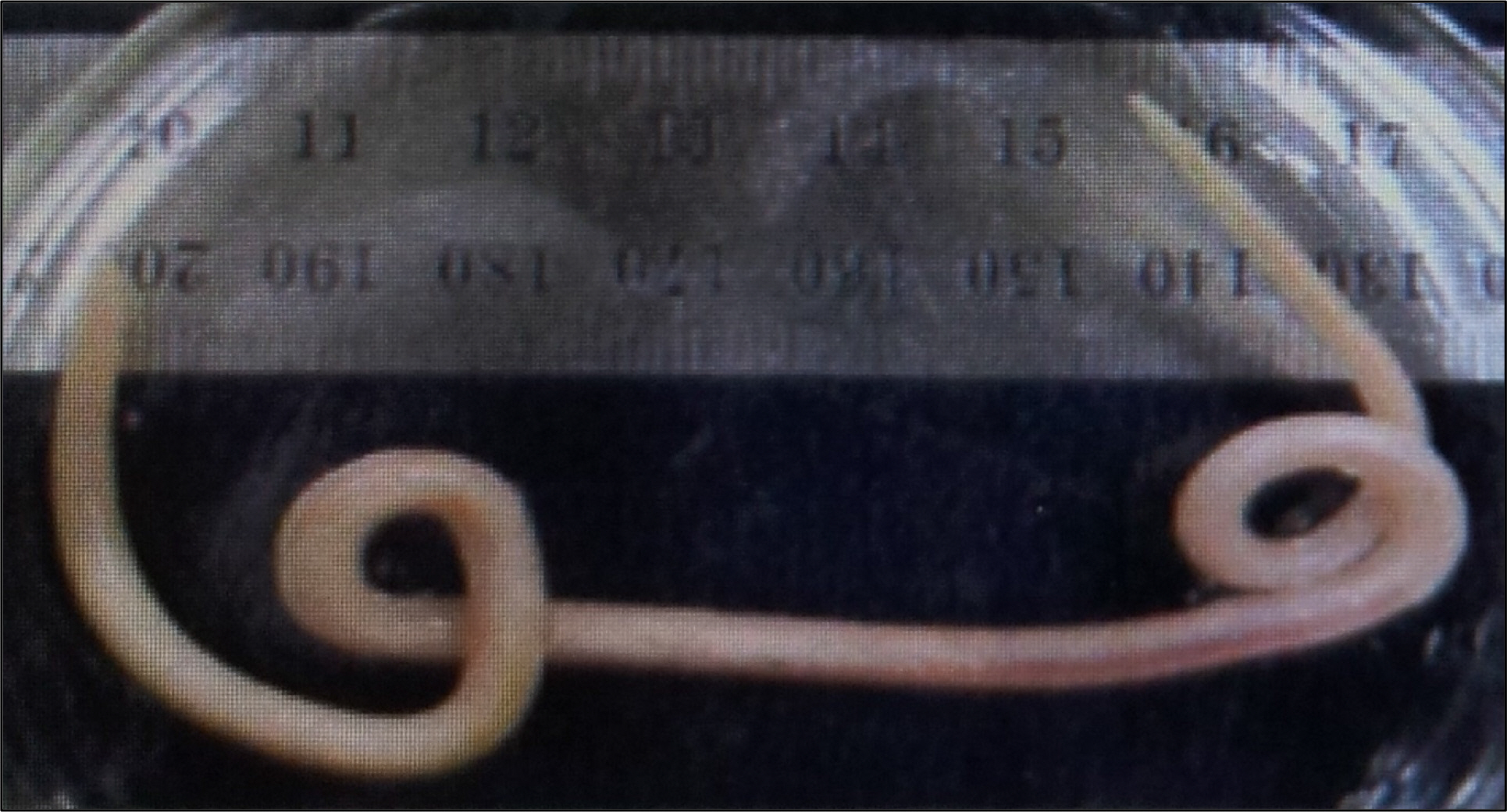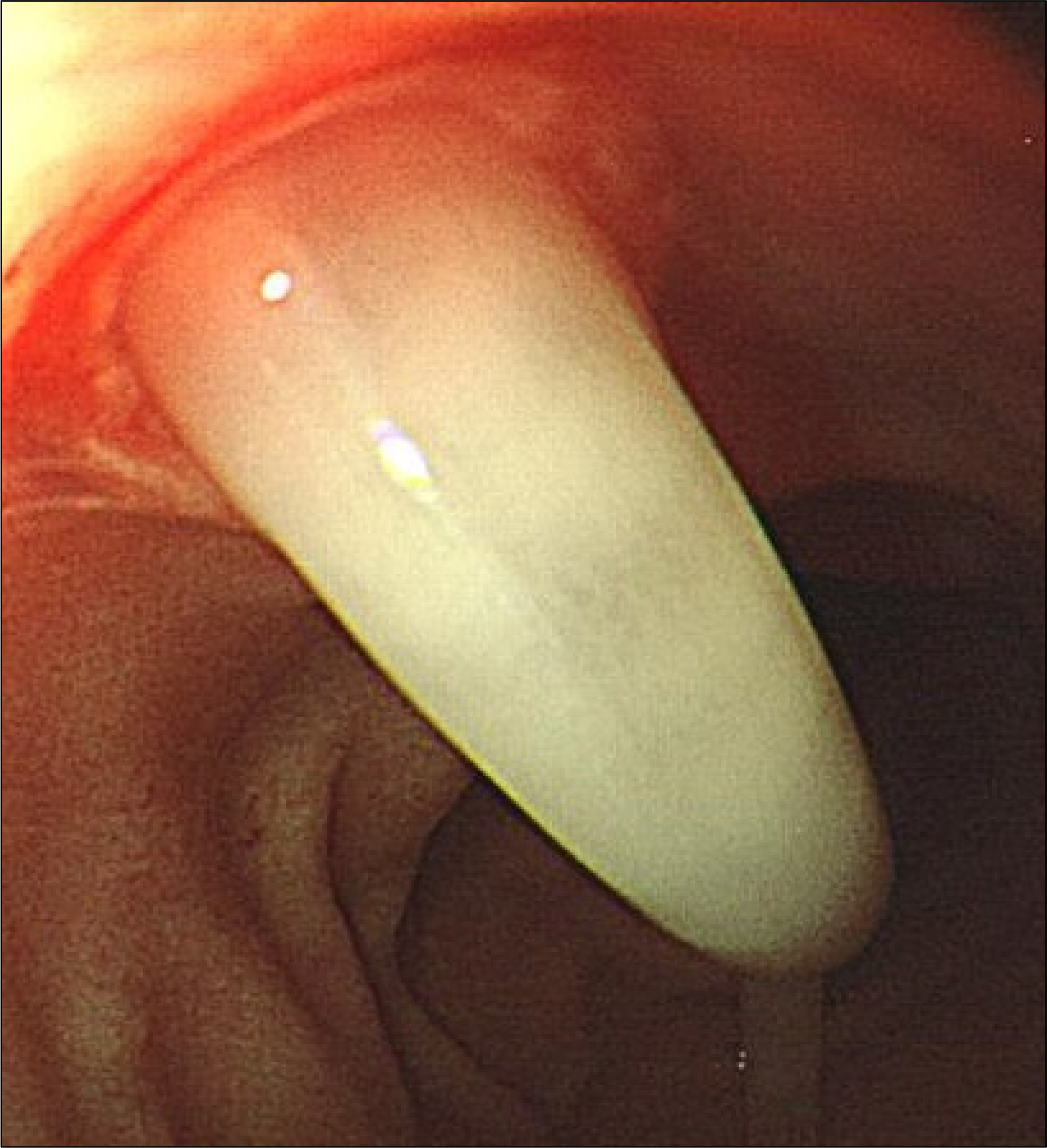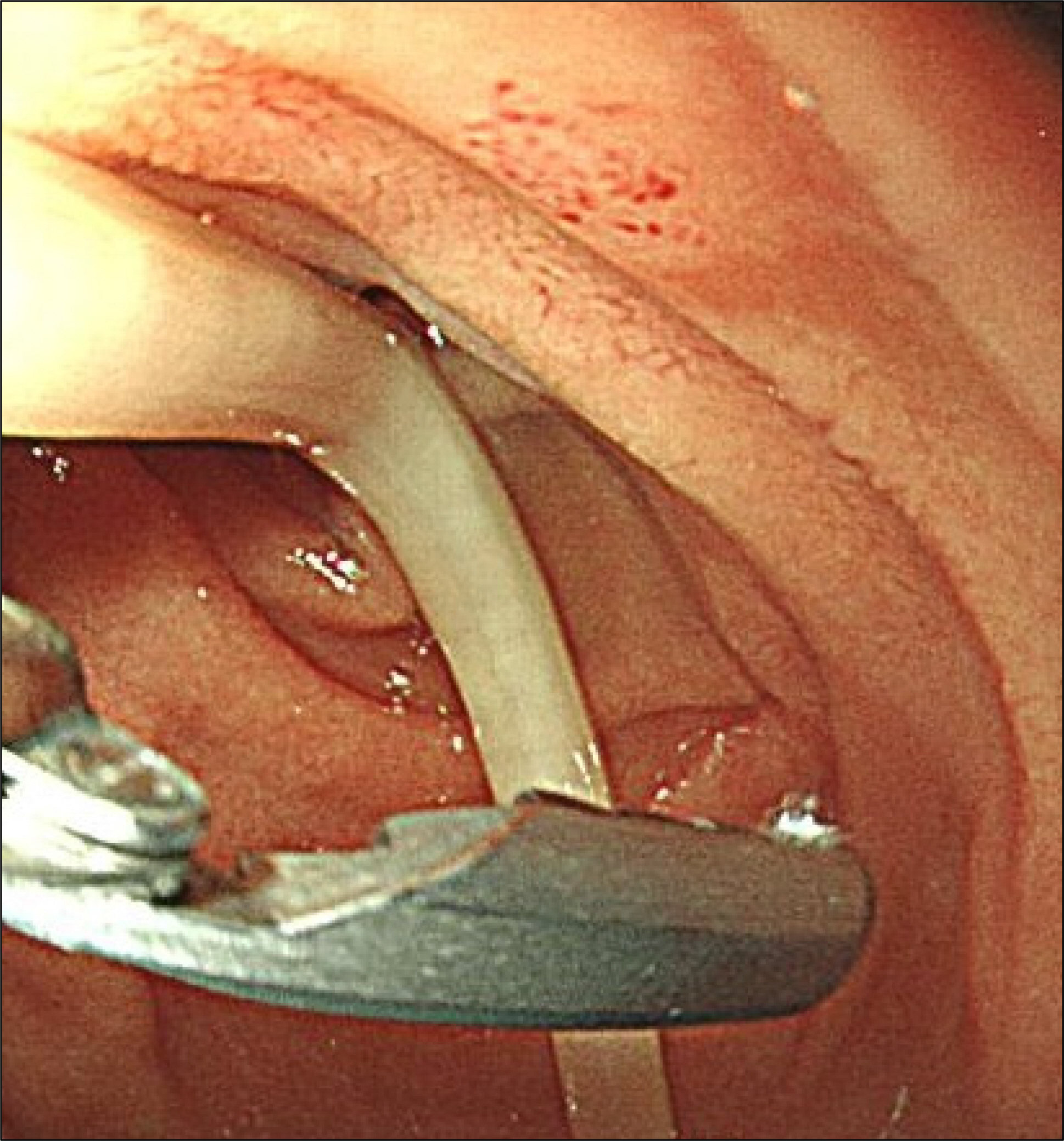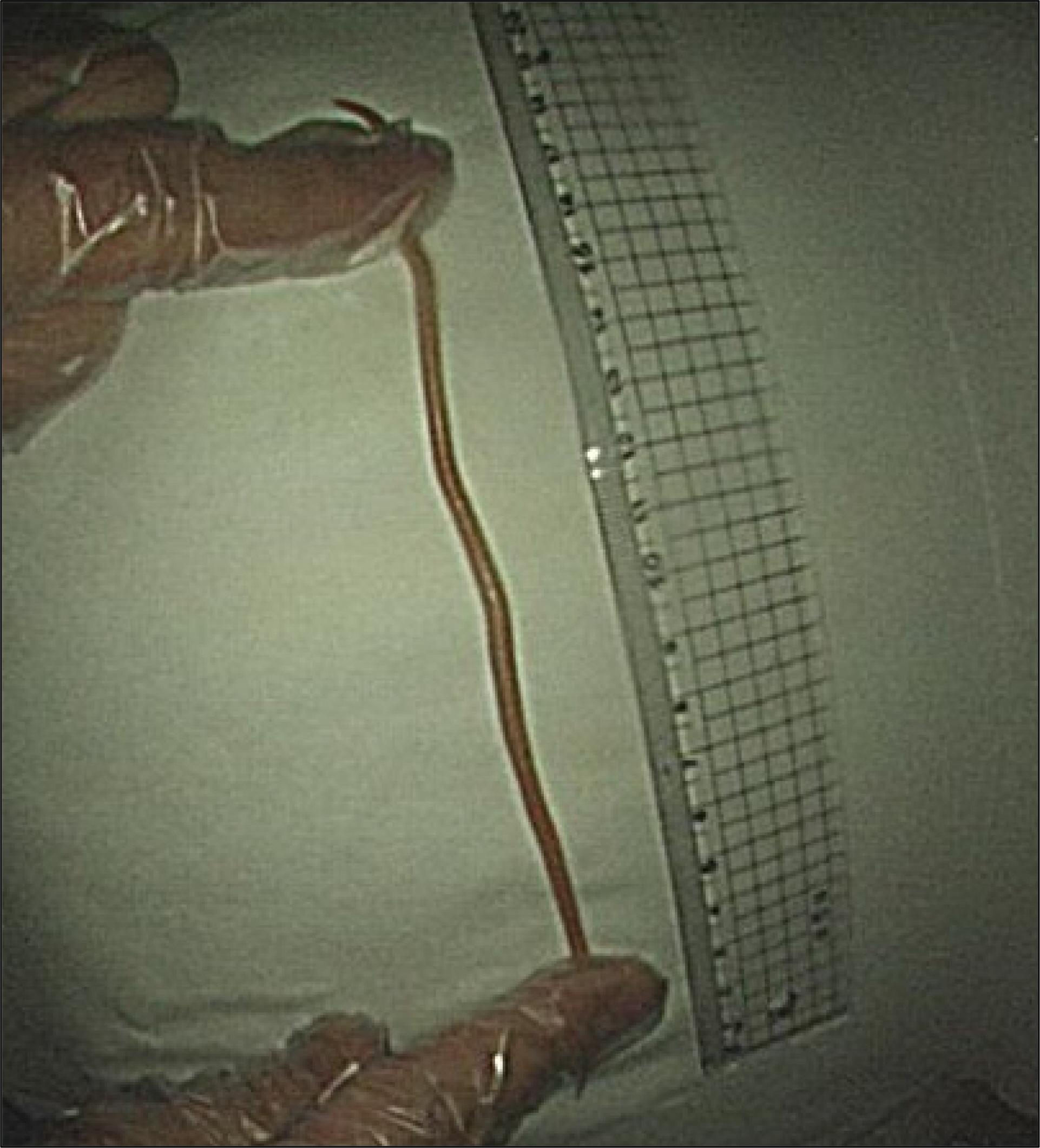Korean J Gastroenterol.
2017 Dec;70(6):304-307. 10.4166/kjg.2017.70.6.304.
Diagnosis and Removal of Ascaris lumbricoides during Endoscopic Examination
- Affiliations
-
- 1Department of Internal Medicine, Seoul National University College of Medicine, Seoul, Korea. kjwjor@snu.ac.kr
- 2Department of Internal Medicine, Seoul Metropolitan Government-Seoul National University Boramae Medical Center, Seoul, Korea.
- KMID: 2398882
- DOI: http://doi.org/10.4166/kjg.2017.70.6.304
Abstract
- No abstract available.
MeSH Terms
Figure
Reference
-
References
1. de Silva NR, Brooker S, Hotez PJ, Montresor A, Engels D, Savioli L. Soil-transmitted helminth infections: updating the global picture. Trends Parasitol. 2003; 19:547–551.
Article2. Kim TS, Cho SH, Huh S, et al. A nationwide survey on the abdominal of intestinal parasitic infections in the Republic of Korea, 2004. Korean J Parasitol. 2009; 47:37–47.3. National surveys of intestinal parasitic infections in Korea, 8th abdominal (2013). [Internet]. Cheongju: Korea Centers for Disease Control and Prevention;2014. Jan 29 [cited 2017 Nov 2]. Available from:. http://cdc.go.kr/CDC/info/CdcKrInfo0301.jsp?menuIds=HOME001-MNU1154-MNU0005-MNU0037&cid=24152.
- Full Text Links
- Actions
-
Cited
- CITED
-
- Close
- Share
- Similar articles
-
- A Case of Acute Pancreatitis due to Impaction of Ascaris lumbricoides into the Pancreatic Duct
- Biliary Ascariasis with Choledocholithiasis and Biliary Pancreatitis: Endoscopically Treated
- A Case of Ascarid Chronic Pancreatitis Due to Impaction of Ascaris Lumbricoides into the pancreatic Duct
- Studies on the intradermal reactions with the fractions of Ascaris lumbricoides
- Two Worms of Ascaris lumbricoides in the Bile Duct Combined with Bile duct Stones and Liver Abscess: A Case Report







